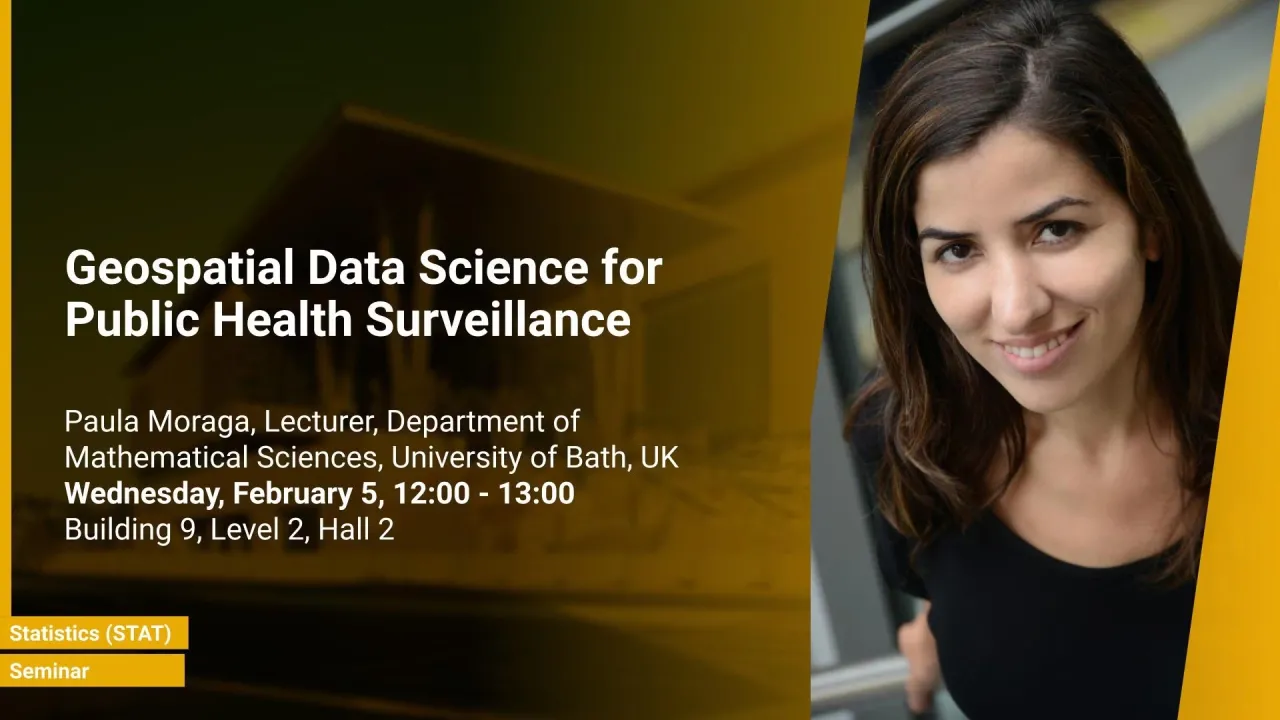
Geospatial Data Science for Public Health Surveillance - Seminar
- Paula Moraga, Lecturer, Department of Mathematical Sciences, University of Bath, UK
B9 L2 H2
In this talk, I will give an overview of my research which focuses on the development of innovative statistical methods and interactive visualization applications for geospatial data analysis and health surveillance. I will illustrate some of my projects in the following areas: 1. Development of new statistical methodology; 2. Development of open-source statistical software such as the R packages; 3. Health surveillance projects. Finally, I will describe my future research on innovation in data acquisition and visualization, precision disease mapping, and digital health surveillance, and how it can inform policymaking and improve population health globally.
Overview
Abstract
Geospatial health data are essential to inform public health and policy. These data can be used to quantify disease burden, understand geographic and temporal patterns, identify risk factors, and measure inequalities. In this talk, I will give an overview of my research which focuses on the development of innovative statistical methods and interactive visualization applications for geospatial data analysis and health surveillance. I will illustrate some of my projects in the following areas: 1. Development of new statistical methodology including point process models to characterize the propagation patterns of hepatitis C virus in human livers, and geostatistical models for the integration of spatially misaligned data with applications in air pollution. 2. Development of open-source statistical software such as the R packages epiflows for risk assessment of the travel-related spread of disease, and SpatialEpiApp for disease mapping and the detection of clusters. 3. Health surveillance projects where I developed modeling architectures to understand the Spatio-temporal patterns and identify targets for intervention of lymphatic filariasis in sub-Saharan Africa and leptospirosis in Brazil. Finally, I will describe my future research on innovation in data acquisition and visualization, precision disease mapping, and digital health surveillance, and how it can inform policymaking and improve population health globally.
Brief Biography
Paula Moraga is a Lecturer in Statistics in the Department of Mathematical Sciences at the University of Bath, UK. Previously, she held academic positions at Lancaster University, Queensland University of Technology, London School of Hygiene and Tropical Medicine, and Harvard School of Public Health. Her work focuses on the development of innovative statistical methods and open-source software for geospatial data analysis and health surveillance, and has directly informed strategic policy in reducing disease burden in several countries. Paula has developed modeling architectures to understand the Spatio-temporal patterns and identify targets for intervention of malaria in Africa, leptospirosis in Brazil, and cancer in Australia, and has worked on the development of a number of R packages for Bayesian risk modeling, detection of disease clusters, and risk assessment of travel-related spread of disease. Paula has published extensively in leading journals and is the author of the book 'Geospatial Health Data: Modeling and Visualization with R-INLA and Shiny' (2019, Chapman & Hall/CRC). Paula received her Bachelor’s degree in Mathematics and her Ph.D. degree in Statistics from the University of Valencia, and her Master’s degree in Biostatistics from Harvard University.